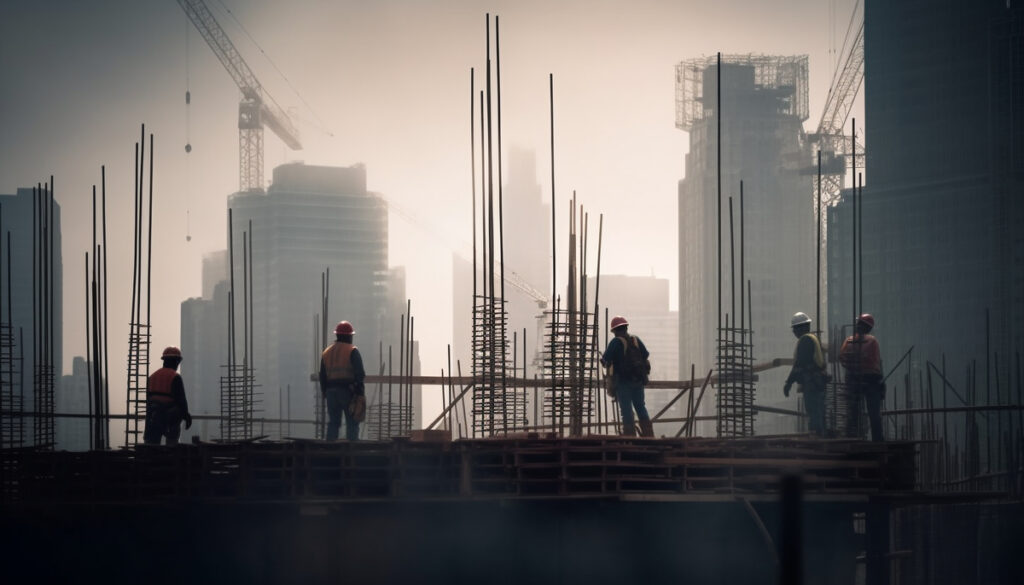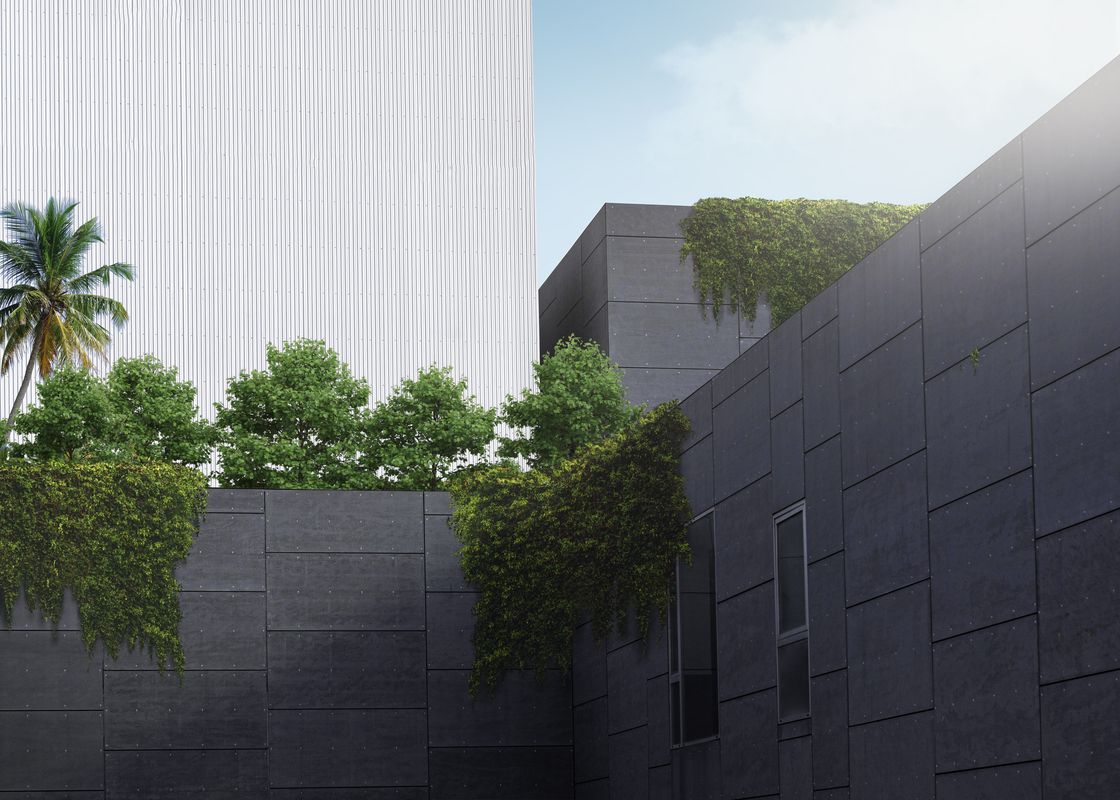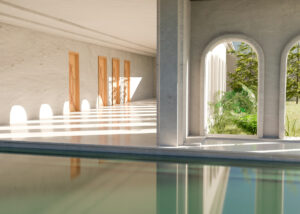Exclusive Neuroject Article: The construction industry has been undergoing some major changes over the past few years. The pandemic has made it more difficult for many enterprises to operate, and the growth of technological and safety developments has had a direct impact on how construction companies implement their projects. It is common for different types of construction projects to be classified according to their scale, the type of structure being developed, and its purpose also called an ‘end user’ or land use project. There are six types of construction projects in general: houses, businesses, institutions, mixed uses, industrial, and heavy civil.
To make sure that development projects satisfy the different needs of individual communities in which they are being developed, urban planning authorities regularly classify them according to their end-use. It is also possible to help project owners and contractors understand the legal requirements, such as compliance with zoning regulations and building codes, and to anticipate the engineering needs and environmental impacts of the project, by defining types of construction by their use.
Developers and contractors often tend to specialize types of construction projects due to the vast differences in size, scope, cost, engineering demands, equipment, and building materials requirements. In addition, some contractors may lay down an organizational chart that includes several business units and all the different types of buildings they are interested in.
We shall look at the seven key developments of the types of construction industry as we prepare to keep an eye on them for 2024.
Table of Contents
What are the Types of Construction?
It is important to consider the type of construction when it comes to the resilience of a structure against fire. This includes all the structural members and load-bearing components of the building. The choice of materials and design of the structure plays a crucial role in determining the building’s ability to withstand various phenomena such as fire, earthquake, or any other related events. In the construction industry, five main types of buildings are commonly recognized.
Evolving Types of Construction in 2024
Construction is a method of building or putting together infrastructure, within the field of Architecture and Civil Engineering. It means drawing up an exhaustive plan and design, which is combined with various types of materials and elements to form a specific structure. Usually, the project manager is responsible for these projects, in which case he shall be assisted by a project architect, engineering engineer, or construction manager. And it’s been improving every year drastically.
We’ve seen a major shift in building trends over the last couple of years among types of construction. The pandemic had altered the way that types of construction companies operated. Digitalization and things like BIM have become all too common. This trend is expected to continue over the next year. The construction timetable will continue to be driven by procurement, and the costs of building materials are set to increase further. Technology and streamlined efficiency will, however, be at the heart of many of the most important trends.
With advances in technology, changes in legislation, and market trends, the building sector continues to evolve. Significant changes within the industry, which will influence it for many years to come, will be underway by about 2024. Let’s discuss the top 7 trends in types of construction this year and how they will have an impact on the sector at large in this blog post.
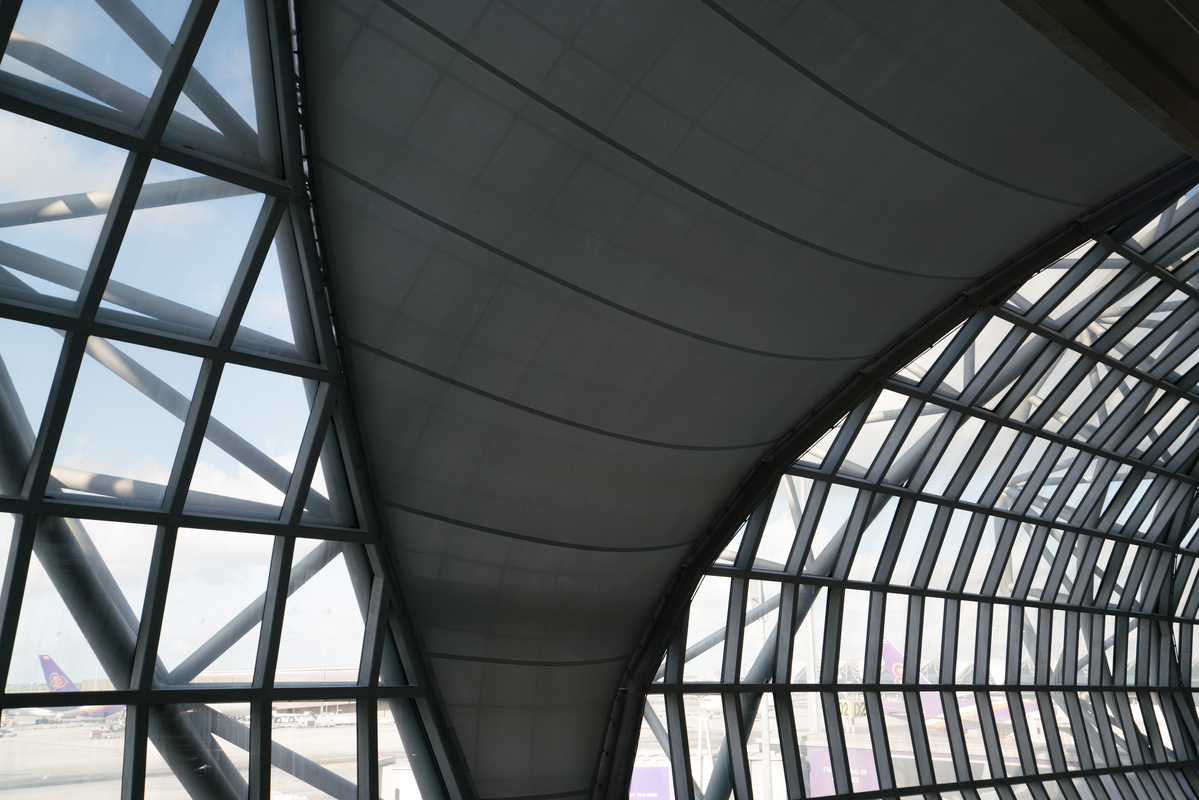
1. Residential Projects
Residential construction describes structures built for habitation. The types of construction of single and multiple-family dwellings may be included in this category. However, to describe a project’s needs and considerations accurately, the term “Multifamily” is often too broad.
The types of construction, repair, and renovation of buildings that house people, equipment, or supplies are known as residence buildings. This includes apartments, townhouses, rentals, nursing homes, dorms, and other structures. Garages and utility buildings are also considered dwellings. The repair and installation of services such as water or electricity around buildings are also part of house-building activities.
To better understand the concept, let’s take an example. Building a duplex is different from constructing an apartment complex. Although they are both single-family dwellings, they differ in scale, cost, construction materials, and engineering requirements. High-density residential projects, such as high-rise apartment buildings, have more in common with commercial projects than with other residential projects, from the owner’s and contractor’s perspectives.
Suggested article to read: Top Residential Projects of 2024
Examples of Residential Construction
- Single Family Homes
- Condominiums
- Townhouses
- Hotels
The Factors to Consider for Residential Construction
- Location: The location is one of them, as you want a place that can be accessed and fits in with your lifestyle. Also, please ensure that the area is secure and free of flooding.
- Budget: You will have to think about your budget, as well as how much you may be able to spend. Do not forget that quality is superior to quantity. This means that not all the very expensive materials are of great quality, so you must be thorough about your money’s worth in these types of construction.
- Zoning and Permits: To keep your project on track, and avoid any delays, you must have a real-time horizon for the project. It will also save you time and labor, not to mention unnecessary costs.
2. Commercial Projects
Commercial construction encompasses a wide range of business facilities such as offices, retail premises, shopping centers, hotels, and other establishments designed for commercial purposes as one of the types of construction. Compared to residential construction, commercial projects are much more complex. Commercial developers and designers need to consider a plethora of requirements such as functionality, safety, environmental impact, energy efficiency, and accessibility.
The cost of these types of construction for contractors and subcontractors often requires stricter prequalification criteria, such as securing bonds for contracts. A sharp increase in financial risks, especially at the predevelopment stage, has widened the gap between residential and commercial construction. The owners of the projects which are not yet approved will probably be required to obtain approval from their Governing Body or Council to act and they have no hope of obtaining financing for this project.
Specific building codes and standards that address public safety like fire-resistant materials, fire protection systems, emergency exits, or energy efficiency shall be complied with in commercial construction projects. Accessibility features, which comply with the ADA, are also generally required in commercial buildings.
Suggested article to read: Top 11 Commercial Projects of 2024
Examples of Commercial Projects
- Restaurants
- Medical Facilities
- Retail & Grocery Stores
- Shopping Malls
The Factors to Consider for Commercial Projects
- Location: Finding the best location is the first step in your new venture. This depends upon the type of business you’ll be setting up in your new space. For instance, a retail outlet will need to be situated in an area of high traffic where customers are easily able to access it. There is a difference in the needs of individual types of construction. Check out similar companies and see where they’re compatible with each other. Though you may not follow the rules, it is best to never stray too far from them.
- Budget: Developing an accurate budget and securing adequate funding are crucial for the success of your Commercial Property Project as they directly impact project feasibility and risk management. Consulting with experts from the finance or property sectors can provide valuable insights into current market trends and potential financing options. With a detailed financial plan, you can ensure that you have enough funds for the completion of the project and can handle any unexpected expenses that may arise during this type of construction.
- Zoning and Permits: You will need to approve your plans, apply for all the necessary permits, and be sure that you are complying with any land use law applicable in your area if a building project is to take place. It should start as soon as you have drawn up your plans for the new property. The time of year is important because it might be necessary to amend your plans so that they remain within the bounds of Local Development Regulations.
3. Green Building Projects
Sustainability has recently become a priority for more and more companies. This has hurt the construction sector in recent years, and this is constantly going to be so. The owners may require the engineer to have a high focus on energy efficiency, which is likely to affect his design.
In addition, the sustainability of actual types of construction sites can be a focus of construction companies. Efforts to reduce greenhouse gas emissions could be undertaken, if at all possible, through the use of solar energy.
However, some of these requests may be motivated by changes in the law about owners or types of construction undertakings. For instance, Boston proposes that by 2050 it become a carbon-offsetting city. This would have a huge impact on the entire construction market if these laws were enacted, with enormous changes in design and how they are operated.
Suggested article to read: The Top 7 Green Architecture Projects
Examples of Green Building
- Gray Water Recycling: The wastewater from air conditioning installations may be recycled into fuel and irrigation systems, thus promoting the conservation of water as well as sustainable construction methods.
- Solar Power: With companies handling the installation and incentive, solar power is becoming cost-effective and practical for commercial buildings. The installation of solar panels may be fitted on roofs, windows, or sidewalks to serve two purposes.
- Energy-Efficient Window Systems: By limiting the flow of heat, energy-efficient windows, double glazing and triple glazing with argon gas, and tightly sealed frames help to prevent heat gain and loss in buildings.
- Radiant Floors: The radiant floors are efficient at heating spaces with less energy, using electrical tubes and solar panels to generate renewable energy, reducing grid strain, and ensuring a faster degree of comfort.
The Factors to Consider for Green Building
- Location: Energy-efficient building practices are utilized to construct sustainable buildings such as Passive Housing, which is constructed using super insulation and various techniques to ensure secure types of envelope and minimize energy consumption. In the field of sustainable buildings, renewable energy sources such as geothermal and solar PV are widely used.
- Budget: There is still a debate about whether green buildings are more expensive than regular buildings. However, it is important to note that green buildings are quite different from ordinary ones. Although they may have an average cost that is 2% higher, they can save between 14% and 19% on operating expenses. This means that sustainable real estate investment can generate a return that can last for months or even years, thanks to these savings.
- Zoning and Permits: Urban sprawl is not a sustainable approach to development. Instead of constructing new areas, environmentally conscious builders are encouraged to focus on building on already-developed land. To reduce people’s reliance on transportation, it’s advisable to invest in infrastructure near existing transportation hubs like bus routes and libraries. However, if residents must commute long distances every day, then constructing a greenhouse would be a futile effort. Therefore, it’s better to choose smaller building sites as they have less environmental impact.
4. Institutional Projects
Projects designed for use by the public, schools, hospitals, government buildings, and similar facilities fall under institutional construction. This type of project serves as a publicly accessible version of a commercial project. Interestingly, institutional projects can be privately developed, managed, and operated, instead of funded by a public agency. Therefore, there is a significant overlap between commercial and institutional construction regarding design requirements, building materials, and equipment.
Institutional structures such as schools, hospitals, and prisons require different types of buildings. Before undertaking such a project, it’s essential to have a good understanding of the construction of institutions. When planning and executing institutional building projects, several special considerations must be taken into account.
Examples of Institutional Construction
- Hospitals
- government buildings
- military
- schools
The Factors to Consider for Institutional Construction
- Location: Construction companies are increasingly opting to rent equipment for institutional establishments instead of purchasing it, as equipment requirements can vary greatly from project to project. For instance, since many such buildings are low-height, buying a man lift may not be a cost-effective option. By renting, building firms can reduce capital expenditure and allocate funds to other profitable opportunities.
- Budget: The market for institutional buildings saw an 8.2 percent increase in February compared to the previous month. This sector has been growing steadily over the past few years due to the rise in these types of construction of healthcare facilities, schools, and leisure centers, and the increase in the number of terminals.
- Zoning and Permits: The manufacturing buildings also contain three phases of electrical energy supply, so that sufficient voltage can be used to operate the large machinery housed inside.
5. Heavy Civil Projects
Major civil construction projects typically involve large-scale engineering works related to infrastructure and government undertakings. These projects comprise transportation systems such as highways, bridges, tunnels, railways, and aerodromes, as well as utilities like water and sanitation facilities, communication, and power supply networks. They are commonly referred to as “horizontal construction” because they are generally longer than in height.
Undertaking the predesign and types of construction phases of public and infrastructure projects can be incredibly complex due to their highly engineered and complex designs. Pre-construction of such projects is not uncommon and can take several years to complete.
Contracting capacity available to agencies engaged in civil or infrastructure projects varies considerably from one type of project to another. In part it is due to the very restrictive entry conditions: specialized heavy equipment, as well as expertise providing specific project specifications, are often required for major public works projects.
Examples of Heavy Civil Projects
- Bridges
- Ports and harbors
- Natural gas pipelines and compression stations
- Highways
The Factors to Consider for Heavy Civil Projects
- Location: Large public and community projects are at the heart of heavy civil construction. The construction of water systems, waterways, and large industries like shipbuilding may also form part of the High Civil Projects.
- Budget: Choosing one of the large types of construction firms that delivers the assurance of 4 key areas: timing, cost, quality, and security in light of budget constraints and fast turnaround times are essential.
- Zoning and Permits: Large public and community projects are at the heart of heavy civil construction.
6. Mixed-Use Projects
Mixed-use building projects bring together a wide variety of types of construction and land uses in one development or area. By creating a diverse set of functions that are easily accessible and within walking distance of one another, joint-use developments seek to improve the efficiency and integration of communities. To create a dynamic and accessible environment in cities or suburbs, it is often comprised of mixed housing and commercial units, leisure facilities, environmentally friendly areas as well as city features.
As a means to reduce financial risk, multiuse projects are popular with developers which allow them to spread their holdings throughout the building. In case of a fall in office space demand, residential and retail units can help mitigate losses to their owners when pandemics occur. In almost all phases of a project, however, the ability to accommodate more than one end use in a single development brings with it an increased level of complexity and corresponding increases in operational risk among the types of construction.
While there’s an almost unlimited number of configurations, they all happen to include four types of mixed-use construction projects that are essentially the same: vertical Mixed-Use Projects, Horizontal Mixed-Use Projects, Horizontal mixed-use projects, and Oriented Transit Development Communities.
Examples of Mixed-Use Projects
- Vertical mixed-use: A vertical mixed-use project will stack several different ends uses within one building, such as retail space on the ground floor, and office and residential spaces on the upper floors. They’re common in dense areas where there are lots of people.
- Horizontal mixed-use: Where vertical mixed-use projects build-up, horizontal mixed-use developments build-out. This has led to a higher number of such types of construction projects in the suburbs where space is scarcer and therefore more readily available. Several buildings in development are usually used for their specific purposes.
- Transit-oriented developments: The development of vertical and horizontal mixed uses is often integrated into these projects. To revive the adoption of an existing but unused hub, TODs may coincide with the opening of a new transit station. To stimulate investment in transit-oriented developments, thereby increasing the number of riders and enhancing community connection and accessibility, developers are frequently able to use Federal or State funds designated for this purpose.
- Live-work-play communities: Live-work-play Communities aim to provide a diverse range of opportunities for life, work, and leisure or recreational activities in one neighborhood. Often built as horizontal developments spanning multiple blocks or even acres, live-work-play communities are increasingly common in suburban locations.
The Factors to Consider for Mixed-Use Projects
- Location: In the creative development of restricted locations, which offer the potential for value with flexibility and well-being, mixed-use gold was discovered. Due to the location of many sites in transport and former industrial centers, these opportunities have a cost and construction impact. Industrial wastelands near major towns and cities, which could be potential sites of development, were left vacant in post-industrial Britain.
- Budget: The complexity of the interfaces among uses and their different priorities means that it is difficult to estimate buildings made up of more than one use. To take into account these changes in the evolution of the scheme, the cost model has to be flexible. The plants and structures of some schemes can be shared or distributed to result in an arbitrary division among the use classes. The cost benchmarks may be different from one use building to another, which is why initial evaluation considerations are of paramount importance.
- Zoning and Permits: Mixed-use development buildings are smaller in their footprint than if all the components were spread over a variety of areas. It saves space! Especially in very dense areas such as large cities, conservation of space can make a big difference. And it’s easier for people to go to one place where they can be filled with all their needs such as grocery shopping and an eye doctor appointment at the same time! It is an example of the development of Horizontal Mixed Use.
7. Industrial Projects
Projects built to serve industrial purposes, such as factories, warehouses, and power plants, are described in the context of industrial construction. Industries such as factories, chemical processing plants, and refineries are examples. A higher degree of government regulation, especially in the field of environmental impact, is often applied to industrial projects. In these cases, it is usually necessary to have a high degree of specialized engineering with material specifications which are rarely found in ordinary types of construction projects.
The industrial construction sector is responsible for designing and building highly specialized structures and facilities in the area of manufacturing, such as warehouses, factories, and power plants. Industrial buildings are designed to comply with industry standards and national, state, and local building codes. Obtaining an enterprise permit and meeting the accommodation requirements are necessary to ensure compliance.
Beyond designing and building these buildings, industrial construction goes beyond that. The field also looks to ensure that the facility’s interior is to its intended use. These buildings are designed to be practical, with good floor plans necessary for their support of heavier equipment. Furthermore, since some production facilities require special product transfers such as access to highways, air routes, railways, shipyards, or round-the-clock services and handling capabilities, there is much emphasis on coordinating distribution during construction projects.
Examples of Industrial Projects
- Warehouse and Distribution: These typically single stories of buildings can vary in size from 5,000 square meters to hundreds of thousands depending on their use for the storage or transportation of goods. The ceiling shall usually be more than 60 meters in height, owing to the necessary racking and storage systems for such types of construction situated within its roof. To allow the semitrailers used for distribution to be transported, additional defining features such as loading docks, big truck doors, and parking lots are also included.
- Light Manufacturing: Light manufacturing is more capital efficient than large industrial types of construction, such as those shown below. Textile, furniture, and household electrical products are examples of these types of construction covered by the Light Industry. By its character, light manufacturing buildings require less materials, space, and energy to operate.
- Showroom: The production of light, as the following examples demonstrate, is more capital-efficient in comparison with massive industry buildings. Types of construction in which the light industry has been active are textile, furniture, and household appliances. Light manufacturing plants are required to use less material, space, and energy by their character.
- Research and Development
The Factors to Consider for Industrial Projects
- Location: The key to a successful industrial construction project is working with a reliable and experienced contractor who can bring your vision to life after you have determined what needs to be done. Companies have specialized in the types of construction of industrial buildings since it was founded in 1933, ranging from a 200,000-square-foot expansion to a unique construction project.
- Budget: Look at prices and services offered by some contractors who work for industry companies. However, it is not the only factor to be taken into account when selecting a supplier as costs are important. When seeking the best value for your investment in the field of types of construction, it is important to understand how costs and the company philosophy of customer service are balanced. Given all of these factors, you will have the possibility to select a general contractor that can not only meet your needs for an industrial project but exceeds them.
- Zoning and Permits: The safety of buildings is an essential element in any types of construction project, but a broad range of particular considerations exist for industrial buildings where they may contain hazardous materials and dangerous equipment.
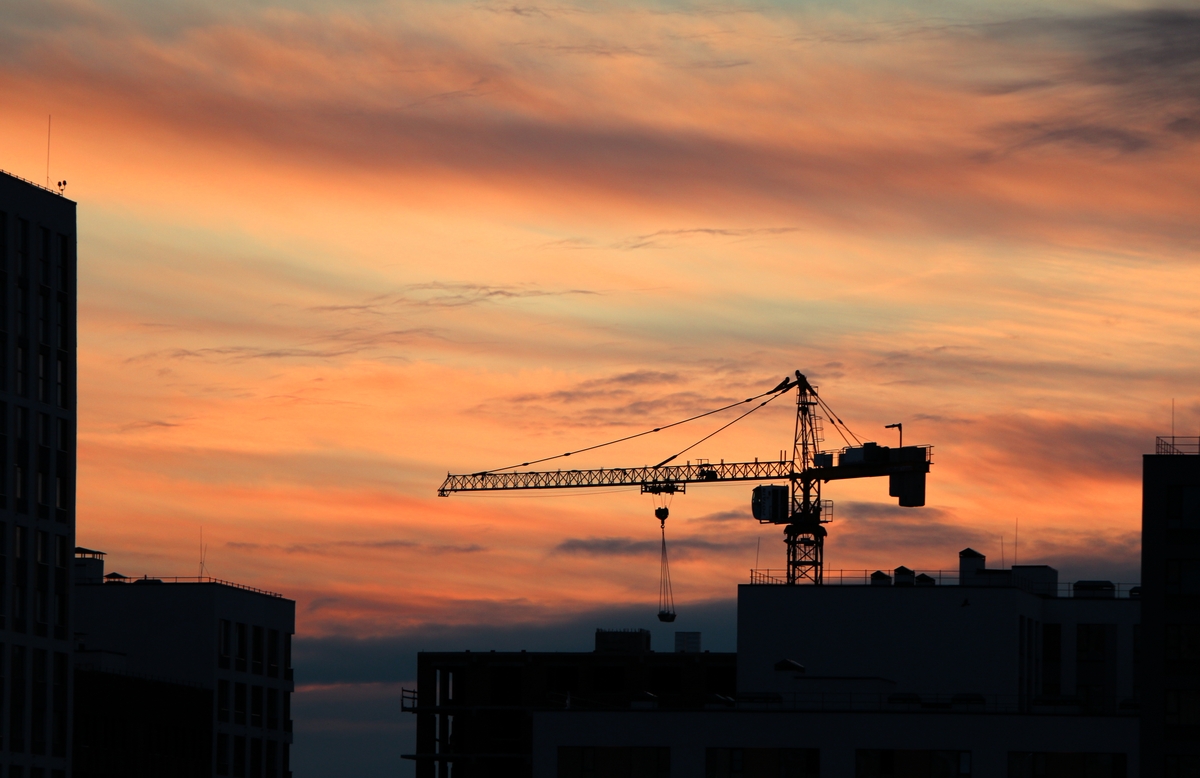
What’s the Significance of Determining Construction Type?
It is crucial for residents and building users to have a good understanding of the construction characteristics of buildings. This information enables residents to quickly determine the type of building material and set their lines of attack. It is essential to understand how some types of construction spread to make important decisions regarding ventilation and water usage. Therefore, it is important to have a strong understanding of types of construction to save lives.
In the case of unforeseen disasters such as hurricanes and earthquakes, the types of construction also affect the building’s resilience. Construction workers are also very careful about accidents on the job; they should be conscious of how their work is affecting the building’s safety in years to come.
Conclusion
Understanding the intricacies of the various types of construction projects is not just essential for industry professionals; it’s also crucial for the safety, resilience, and sustainability of the structures we inhabit. As we navigate a changing world, from green building initiatives to innovative mixed-use developments, the construction industry stands at the forefront of transformation. By staying informed about these trends and challenges, we can better prepare for the future and ensure that our built environment meets the evolving needs of society. So, whether you’re a developer, contractor, or simply someone curious about the world of construction, this knowledge empowers you to make informed decisions and contribute to the ever-evolving construction landscape.
Sustainability is becoming increasingly important for types of construction companies, which is having a significant impact on the construction sector. Institutional construction, which includes public buildings, schools, hospitals, and government facilities, as one of the types of construction requires a high level of focus on energy efficiency and the use of solar energy. Major civil construction projects involve large-scale engineering works related to infrastructure and government initiatives. Mixed-use building projects combine various types of construction and land uses in a single development, improving community efficiency and integration. Industrial construction involves designing and building highly specialized structures and facilities for manufacturing purposes, while also adhering to industry standards and building codes.
The field also focuses on coordinating product distribution during construction projects, as some facilities require special transfers. Understanding these factors is crucial for successful construction projects in different types of construction.
Suggested article to read:
7 Types of Construction Projects
Top 11 Construction Megaprojects Around the World
Resources:
safety culture | Procore | GBCA | Proest | Seko Construction | stevensec
For all the pictures: Freepik

